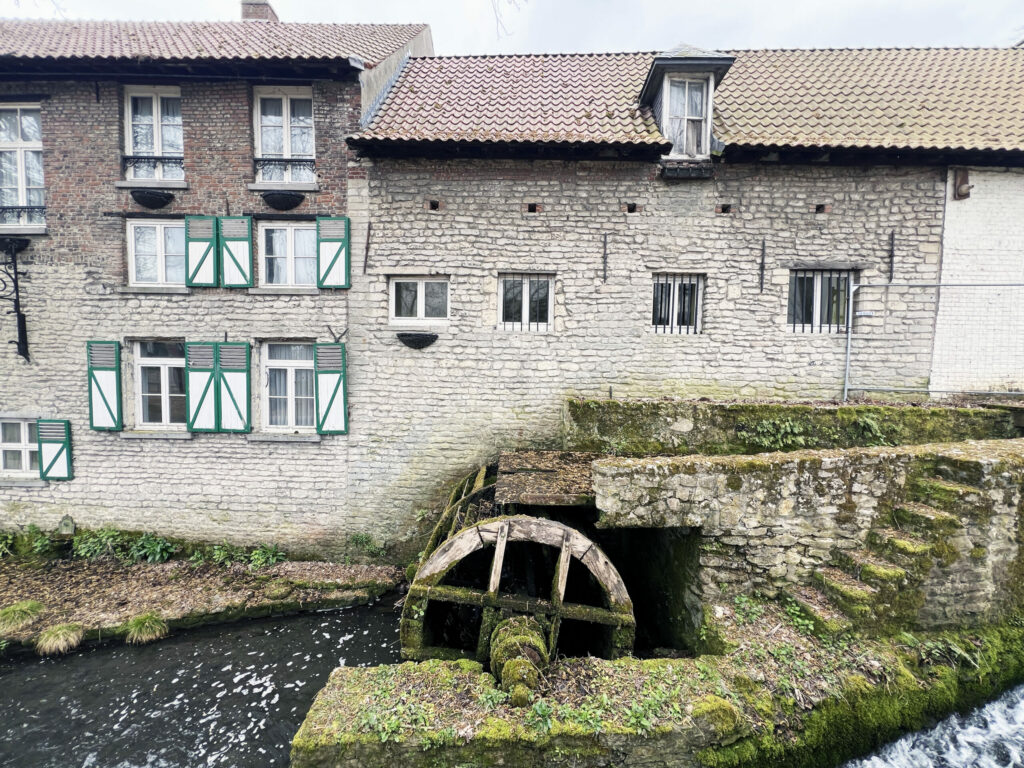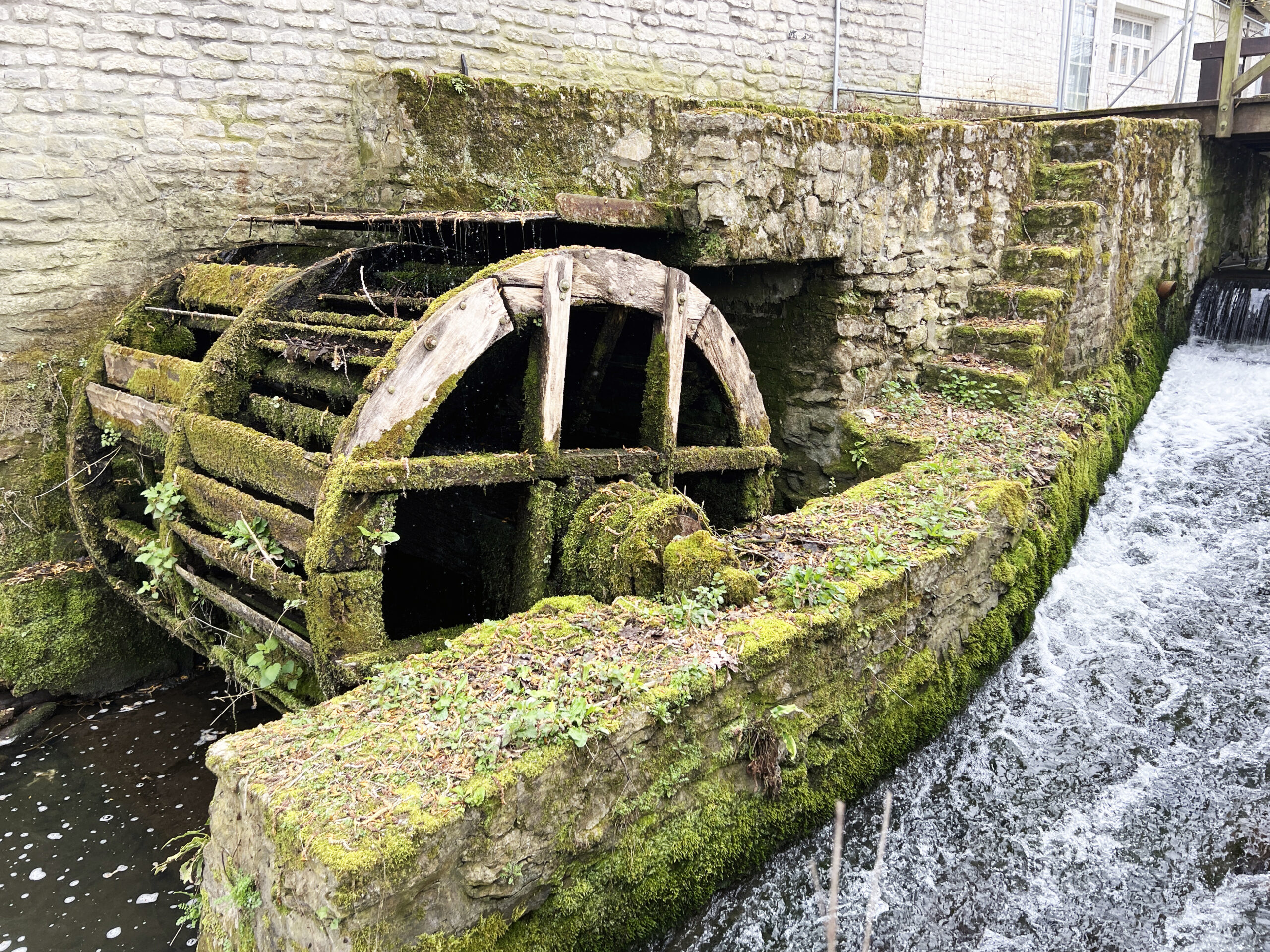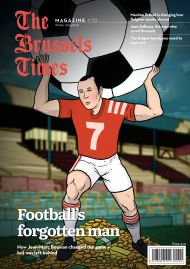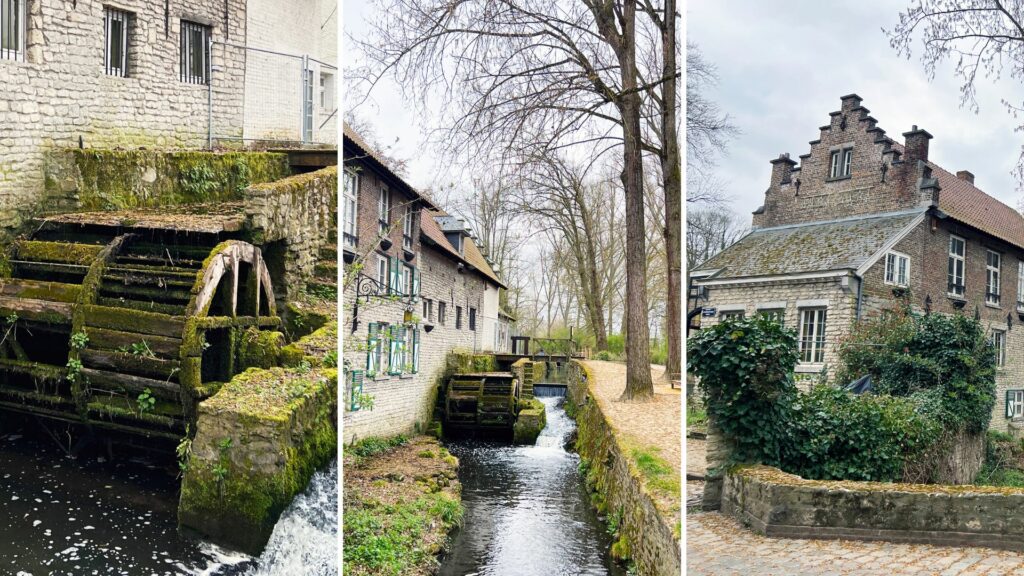The Brussels municipality of Woluwe-Saint-Lambert will start renovating the wheel of one of the oldest watermills in Brussels.
The historic Lindekemalemolen, whose name is derived from the nearby hamlet of Lindekemaleveld, was first mentioned in official documents in 1129. Now, its mill wheel will be completely rebuilt according to the original design, using sustainable materials such as wood and corten steel (weathering steel), announced Brussels State Secretary for Urban Development and Heritage Ans Persoons (Vooruit).
"This initiative by the municipality of Woluwe-Saint-Lambert breathes new life into an important part of Brussels' history and at the same time implements sustainable solutions. This way, the project finds the perfect balance between history and innovation," said Persoons.

Lindekemalemolen. Credit: Cabinet of Ans Persoons
"The project also highlights the importance and appeal of water in the city. Since the 19th century, many Brussels waterways have been buried underground," she added. "Our ambition is to literally put our sources and waterways back in a positive light as part of ecological urban development."
Woluwe-Saint-Lambert's mayor, Olivier Maingain, is pleased with the decision, which he says helps to enhance the city's heritage. He added that the building is protected and will therefore remain intact, even if it is sold.
In addition to the reconstruction of the mill wheel, a hydroelectric installation will be provided that will generate renewable energy, which will either be used by future users of the mill building or injected into the electricity grid.
Sustainable heritage
An educational information board will also be installed to inform visitors about the history of the historic mill and the importance of renewable energy. That way, the restoration will contribute to raising awareness about sustainability and heritage.
The Lindekemalemolen in the municipality's picturesque Malou Park was originally intended for grinding grain, but it became a paper mill in the 16th century. In the 19th century, snuff and chicory were also produced there. With the rise of industrial flour mills, the mill lost its economic function.
At the beginning of the 20th century, the building was transformed into a café, where Brussels residents came to enjoy peace and nature. The construction of the Avenue de Tervueren in 1897 and the expansion of public transport made the mill increasingly accessible.

Lindekemalemolen. Credit: Cabinet of Ans Persoons
Since 1955, the mill has been owned by the municipality of Woluwe-Saint-Lambert. In 1966, it was transformed into a restaurant and 'Le Moulin de Lindekemale' quickly became a household name in the region.
The mill has been protected heritage by the Brussels-Capital Region since 1989. This renovation is an important step in giving the mill site a bright future.
Watermills and watercourses in Brussels
While the Lindekemalemolen is one of the few remaining watermills in Brussels, the city had a rich network of watermills along various watercourses in earlier centuries.
The most important of these was the Zenne, which, together with its many tributaries – such as the Maelbeek, the Woluwe and the Molenbeek – shaped the landscape and served as a source of energy for craft and industrial activities.
Along the Woluwe, in addition to the Lindekemalemolen, other mills were active, such as the Nekkersgatmolen in Ukkel.
The Maalbeek, which flows through Etterbeek, Ixelles and Saint-Josse-ten-Noode, once fed several mills, but was largely covered over in the 19th and 20th centuries. The Zenne itself, once the lifeblood of Brussels, was covered over from the late 19th century to protect the city from flooding and pollution.
Today, many of these historic waterways are hidden beneath the city, but initiatives to make them visible again, such as the ‘Max-sur-Zenne’ project in Maximilien Park and the redevelopment of the Neerpedebeek in Anderlecht and parts of the Woluwe, demonstrate the growing awareness of the importance of water in Brussels’ urban development.

